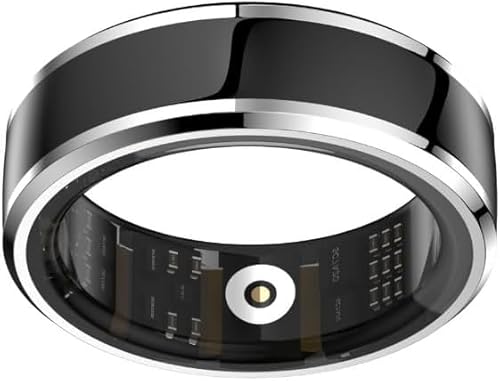MikeHeim
Well-known member
In several of my posts, I have referenced a study on the long-term success rates of Mitral Repair. My old link to the study was lost, but I found the same study now posted somewhere else. The full link to the study is:
http://circ.ahajournals.org/cgi/content/full/104/suppl_1/I-8
Here is the abstract:
Background? Mitral valve repair is considered the gold standard in surgery of degenerative mitral valve insufficiency (MVI), but the long-term results (>20 years) are unknown.
Methods and Results? We reviewed the first 162 consecutive patients who underwent mitral valve repair between 1970 and 1984 for MVI due to nonrheumatic disease. The cause of MVI was degenerative in 146 patients (90%) and bacterial endocarditis in 16 patients (10%). MVI was isolated or, in 18 cases, associated with tricuspid insufficiency. The mean age of the 162 patients (104 men and 58 women) was 56±10 years (age range 22 to 77 years). New York Heart Association functional class was I, II, III, and IV in 2%, 39%, 52%, and 7% of patients, respectively. The mean cardiothoracic ratio was 0.58±0.07 (0.4 to 0.8), and 72 (45%) patients had atrial fibrillation. Valve analysis showed that the main mechanism of MVI was type II Carpentier?s functional classification in 152 patients. The leaflet prolapse involved the posterior leaflet in 93 patients, the anterior leaflet in 28 patients, and both leaflets in 31 patients. Surgical technique included a Carpentier?s ring annuloplasty in all cases, a valve resection in 126 patients, and shortening or transposition of chordae in 49 patients. During the first postoperative month, there were 3 deaths (1.9%) and 3 reoperations (2 valve replacements and 1 repeat repair [1.9%]). Six patients were lost to follow-up. The remaining 151 patients with mitral valve repair were followed during a median of 17 years (range 1 to 29 years; 2273 patient-years). The 20-year Kaplan-Meier survival rate was 48% (95% CI 40% to 57%), which is similar to the survival rate for a normal population with the same age structure. The 20-year rates were 19.3% (95% CI 11% to 27%) for cardiac death and 26% (95% CI 17% to 35%) for cardiac morbidity/mortality (including death from a cardiac cause, stroke, and reoperation). During the 20 years of follow-up, 7 patients were underwent surgery at 3, 7, 7, 8, 8, 10, or 12 years after the initial operation. Valve replacement was carried out in 5 patients, and repeat repair was carried out in 2 patients. At the end of the study, 65 patients remained alive (median follow-up 19 years). Their median age was 76 years (age range 41 to 95 years). All except 1 were in New York Heart Association functional class I/II.
Conclusions? Mitral valve repair using Carpentier?s technique in patients with nonrheumatic MVI provides excellent long-term results with a mortality rate similar to that of the general population and a very low incidence of reoperation.
http://circ.ahajournals.org/cgi/content/full/104/suppl_1/I-8
Here is the abstract:
Background? Mitral valve repair is considered the gold standard in surgery of degenerative mitral valve insufficiency (MVI), but the long-term results (>20 years) are unknown.
Methods and Results? We reviewed the first 162 consecutive patients who underwent mitral valve repair between 1970 and 1984 for MVI due to nonrheumatic disease. The cause of MVI was degenerative in 146 patients (90%) and bacterial endocarditis in 16 patients (10%). MVI was isolated or, in 18 cases, associated with tricuspid insufficiency. The mean age of the 162 patients (104 men and 58 women) was 56±10 years (age range 22 to 77 years). New York Heart Association functional class was I, II, III, and IV in 2%, 39%, 52%, and 7% of patients, respectively. The mean cardiothoracic ratio was 0.58±0.07 (0.4 to 0.8), and 72 (45%) patients had atrial fibrillation. Valve analysis showed that the main mechanism of MVI was type II Carpentier?s functional classification in 152 patients. The leaflet prolapse involved the posterior leaflet in 93 patients, the anterior leaflet in 28 patients, and both leaflets in 31 patients. Surgical technique included a Carpentier?s ring annuloplasty in all cases, a valve resection in 126 patients, and shortening or transposition of chordae in 49 patients. During the first postoperative month, there were 3 deaths (1.9%) and 3 reoperations (2 valve replacements and 1 repeat repair [1.9%]). Six patients were lost to follow-up. The remaining 151 patients with mitral valve repair were followed during a median of 17 years (range 1 to 29 years; 2273 patient-years). The 20-year Kaplan-Meier survival rate was 48% (95% CI 40% to 57%), which is similar to the survival rate for a normal population with the same age structure. The 20-year rates were 19.3% (95% CI 11% to 27%) for cardiac death and 26% (95% CI 17% to 35%) for cardiac morbidity/mortality (including death from a cardiac cause, stroke, and reoperation). During the 20 years of follow-up, 7 patients were underwent surgery at 3, 7, 7, 8, 8, 10, or 12 years after the initial operation. Valve replacement was carried out in 5 patients, and repeat repair was carried out in 2 patients. At the end of the study, 65 patients remained alive (median follow-up 19 years). Their median age was 76 years (age range 41 to 95 years). All except 1 were in New York Heart Association functional class I/II.
Conclusions? Mitral valve repair using Carpentier?s technique in patients with nonrheumatic MVI provides excellent long-term results with a mortality rate similar to that of the general population and a very low incidence of reoperation.






















